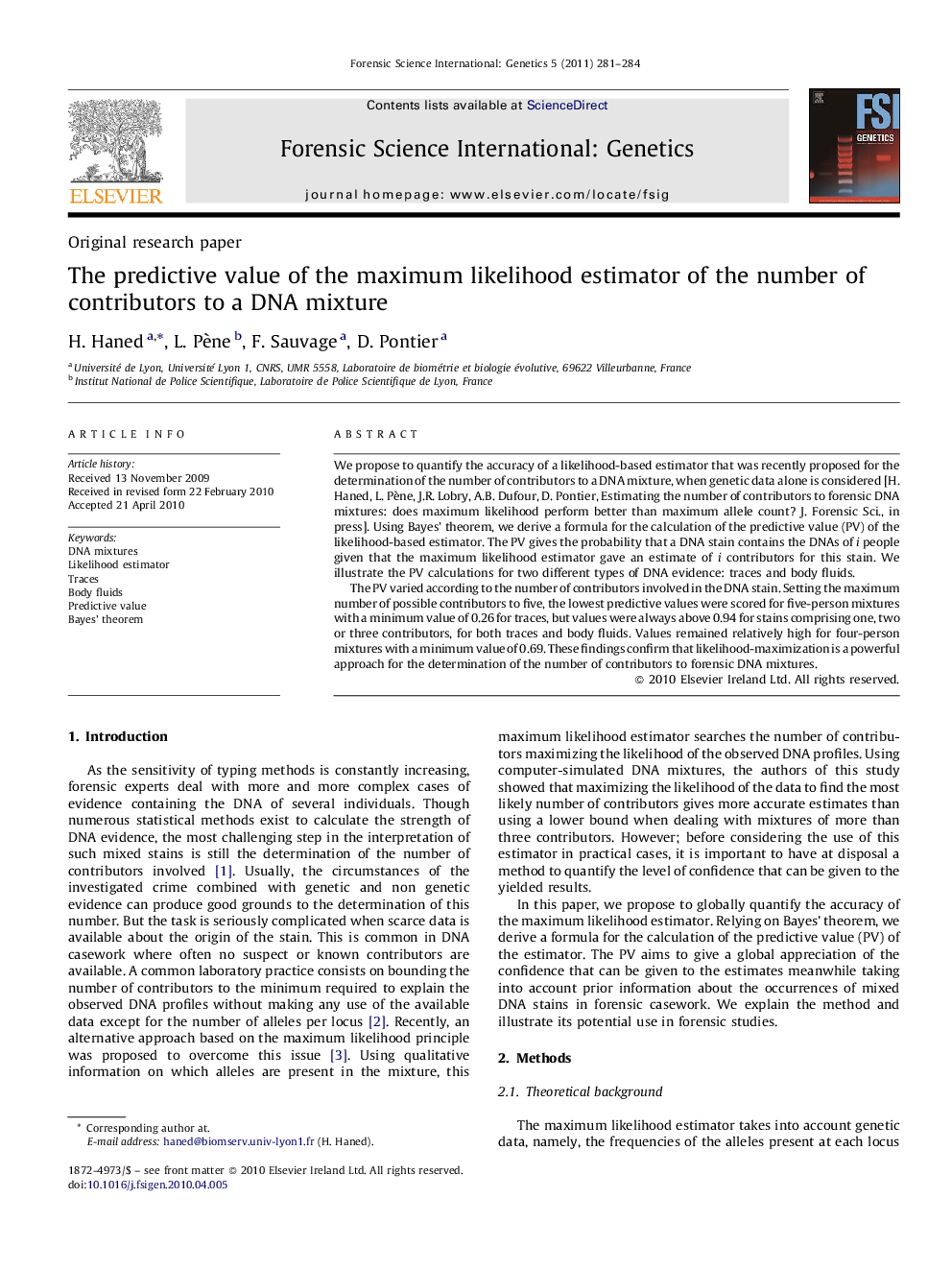| Article ID | Journal | Published Year | Pages | File Type |
|---|---|---|---|---|
| 98847 | Forensic Science International: Genetics | 2011 | 4 Pages |
We propose to quantify the accuracy of a likelihood-based estimator that was recently proposed for the determination of the number of contributors to a DNA mixture, when genetic data alone is considered [H. Haned, L. Pène, J.R. Lobry, A.B. Dufour, D. Pontier, Estimating the number of contributors to forensic DNA mixtures: does maximum likelihood perform better than maximum allele count? J. Forensic Sci., in press]. Using Bayes’ theorem, we derive a formula for the calculation of the predictive value (PV) of the likelihood-based estimator. The PV gives the probability that a DNA stain contains the DNAs of i people given that the maximum likelihood estimator gave an estimate of i contributors for this stain. We illustrate the PV calculations for two different types of DNA evidence: traces and body fluids.The PV varied according to the number of contributors involved in the DNA stain. Setting the maximum number of possible contributors to five, the lowest predictive values were scored for five-person mixtures with a minimum value of 0.26 for traces, but values were always above 0.94 for stains comprising one, two or three contributors, for both traces and body fluids. Values remained relatively high for four-person mixtures with a minimum value of 0.69. These findings confirm that likelihood-maximization is a powerful approach for the determination of the number of contributors to forensic DNA mixtures.
